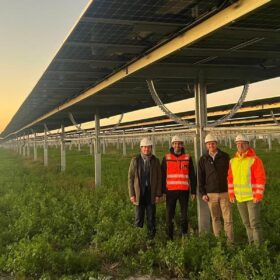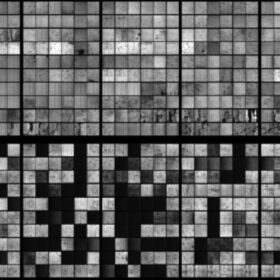China cuts export tax rebate for solar products
China has reduced the export tax rebate for solar products, lowering refunded taxes for Chinese PV exporters and eating into their profit margins. The move might force some companies to increase export prices to mitigate potential financial losses.
Thornova Solar starts solar module production in Indonesia
Thornova Solar has started producing solar modules in Indonesia. The company says the move is in line with changing US market regulations. It plans to supply customers with modules from Indonesia or the United States by mid-2025.
Austrian utility building 164 MW agrivoltaic plant
Burgerland Energie says it is building a 164 MW tracker-based agrivoltaic facility near Tadten-Wallern on Lake Neusiedl, southeastern Austria.
Longi unveils heterojunction BC solar cells with 27.3% efficiency
The Chinese manufacturer said the device is based on dense passivating contacts that reduce parasitic light absorption and improve passivation. It used a streamlined manufacturing technique that is reportedly about one-third more effective than TOPCon mainstream technology.
New encapsulation method boosts perovskite solar cell efficiency by 8%
Scientists at Aalto University in Finland have demonstrated a one-step encapsulant method for perovskite solar cells that provides shielding from oxygen and moisture-induced degradation and a significant relative improvement in efficiency.
Solar LED streetlight with integrated PV panels, battery
Taiwan-based electronics manufacturer Para Light Electronic has launched a compact solar LED streetlight with integrated PV panels and battery to provide up to 15 hours of area-lighting for pedestrian walkways and roads.
Chinese PV Industry Brief: Tongwei starts due diligence on bid for Runergy
Tongwei has initiated due diligence on its CNY 5 billion ($691.8 million) bid to acquire Chinese solar maker Runergy, aiming to secure at least 51% of its equity. The deal, which would be the largest in the PV sector this year, remains subject to changes or potential termination.
Premier Energies to enter aluminum frame manufacturing
Premier Energies, a solar cell and module manufacturer in India, will set up an aluminum frame factory with an annual capacity of 36,000 metric tons for captive consumption.
Polysilicon prices decline amid rising inventories, weak demand
In a new weekly update for pv magazine, OPIS, a Dow Jones company, provides a quick look at the main price trends in the global PV industry.
Nine-year EL testing on 85,000 PV modules shows increasing presence of edge ribbon cracks
A UK research team used electroluminescence imaging to inspect 167 PV installations comprising a total of 5 million solar cells. Defects were categorized into into line cracks, complex cracks, edge-ribbon cracks, and potential-Induced degradation (PID).










